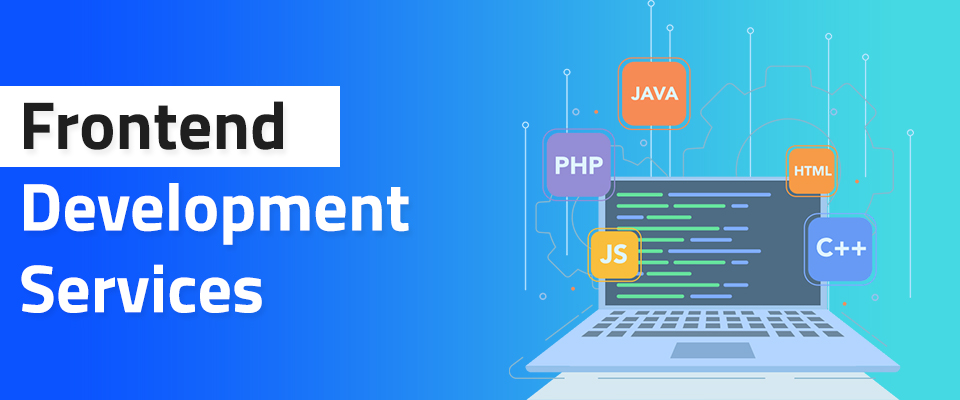Currently, 59% of internet users possess and actively use three digital devices. To ensure you maintain engagement with your audience, it’s crucial that your web application performs flawlessly across a variety of devices, browsers, and operating systems. Your application needs to be quick to load, user-friendly, and dependable. This level of quality and accessibility is achieved through client-side development, an area where our expert team can offer substantial assistance.

Access the Expertise You Require
Our team of software engineers boasts more than six years of experience in crafting intricate web front-ends featuring engaging user interfaces. They are equipped to handle the entire development process, allowing you to concentrate on expanding your business.
Tailored Front End Development
No matter if your project involves creating a straightforward admin panel for internal process management or developing a comprehensive business intelligence dashboard, analytics, or data visualization tool, we’re committed to delivering bespoke front-end development services to perfectly suit your needs.
Leverage Cutting-Edge Front-End Technologies
Our seasoned development team excels in producing top-notch products by employing the latest technologies and methodologies, including Agile/Scrum, test- and behavior-driven development, continuous integration, and test automation, ensuring your project is built to the highest standards.
Single-page applications (SPAs) revolutionize the way web pages operate by loading a single HTML page and dynamically updating content based on user interactions, facilitating an engaging, interactive user experience. Notable examples include Gmail, Twitter, Facebook, SoundCloud, and Trello. The rise in popularity of SPAs is attributed to their numerous benefits over traditional web applications.
Experience Enhanced Responsiveness
SPAs eliminate the need for constant page refreshes, saving users time and streamlining their experience. This efficiency allows users to access what they need, exactly when they need it, without unnecessary delays.
Enjoy an Exceptional User Experience
Despite being web applications, SPAs are engineered to offer a user experience akin to that of desktop applications. The SPA architecture enables developers to create seamless interfaces that mask the complexities of web communications (like requests and responses), presenting a more intuitive user interaction.
Maintain a Clear Separation Between Data and UI
A hallmark of SPAs is their capability to update any UI component without the need to fetch new HTML from the server, thereby keeping the data layer and UI distinctly separate. This architecture not only enhances user experience but also allows for the back-end of the application to be refactored or completely overhauled without necessitating changes to the front-end.
What is the best language for front-end development?
The “best” language for front-end development can vary based on project requirements, developer preference, and specific use cases. However, JavaScript is universally recognized as the essential language for front-end development. It is supported by all modern web browsers and is the backbone of dynamic and interactive web applications. Alongside HTML and CSS, JavaScript forms the core trio of technologies used for building web front-ends.
Why is front-end needed?
Front-end development is crucial for creating the user interface and experience of a web application. It translates the application’s functionality and data into a visual and interactive format that users can easily navigate and interact with. A well-designed front-end is essential for user engagement, satisfaction, accessibility, and the overall success of a web application. It’s the bridge between the user and the application’s back-end, making it indispensable for any web-based project.
What is more important: front-end or back-end?
Both front-end and back-end are equally important in the development of a web application; they serve different but complementary purposes. The front-end is what users interact with directly, affecting their perception and experience of the application. The back-end, on the other hand, is where the application’s logic, database interactions, authentication, and server-side operations occur. A seamless user experience depends on the efficient and effective integration of both front-end and back-end development.
What frameworks do you choose for front-end development?
Choosing a front-end framework depends on several factors including project requirements, scalability needs, team expertise, and the specific features and functionality desired. Popular choices include:
- React: Developed by Facebook, it’s known for its component-based architecture, enabling the development of reusable UI components.
- Vue.js: Appreciated for its simplicity and adaptability, it’s great for both small projects and scalable applications.
- Angular: Developed by Google, it’s a comprehensive framework offering a wide range of features out of the box, ideal for enterprise-level applications.
Why choose Angular for front-end development?
Angular is chosen for its robustness and comprehensive nature as a framework. It offers a wide range of built-in functionalities, such as two-way data binding, dependency injection, modular development, and TypeScript support, making it suitable for developing large-scale, complex applications. Angular’s structure encourages best practices for software development, facilitating maintainability and scalability. Additionally, being backed by Google provides a certain level of trust and assurance regarding long-term support and evolution.

